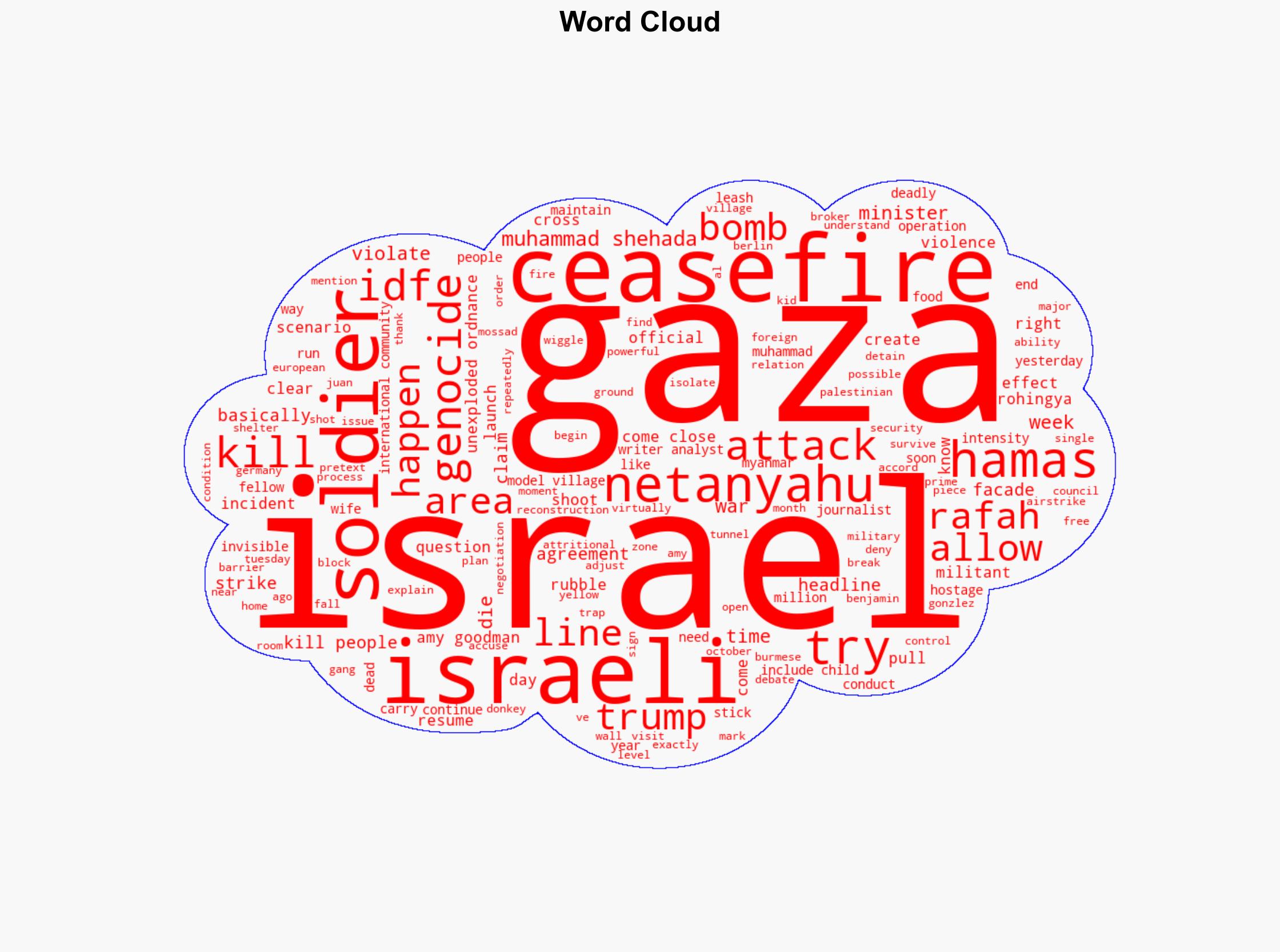Groundhog Day Israel Breaks Ceasefire to Attack Gaza Killing 104 People Including 46 Children – Democracy Now!
Published on: 2025-10-29
Intelligence Report: Groundhog Day Israel Breaks Ceasefire to Attack Gaza Killing 104 People Including 46 Children – Democracy Now!
1. BLUF (Bottom Line Up Front)
The strategic judgment is that the most supported hypothesis is that Israel’s actions are a calculated response to perceived threats from Hamas, rather than an unprovoked escalation. Confidence level: Moderate. Recommended action: Engage in diplomatic efforts to reinforce ceasefire terms and establish independent monitoring mechanisms to verify compliance by both parties.
2. Competing Hypotheses
1. **Hypothesis A**: Israel’s airstrikes are a defensive measure in response to credible intelligence of imminent threats from Hamas, possibly including the alleged killing of an Israeli soldier.
2. **Hypothesis B**: Israel’s actions are part of a broader strategy to undermine the ceasefire and maintain military pressure on Gaza, using the alleged incident as a pretext.
Using the Analysis of Competing Hypotheses (ACH) 2.0, Hypothesis A is better supported by the pattern of Israel’s historical responses to perceived threats and the international defense of its actions by allies. Hypothesis B is supported by the repeated violations of ceasefire terms and the strategic advantage Israel gains by maintaining military dominance.
3. Key Assumptions and Red Flags
– **Assumptions**: Hypothesis A assumes that the intelligence on Hamas threats is accurate and that Israel’s response is proportionate. Hypothesis B assumes that Israel has strategic motivations beyond immediate security concerns.
– **Red Flags**: The lack of independent verification of the alleged threat from Hamas and the absence of international consensus on the legitimacy of Israel’s actions.
– **Blind Spots**: Potential underestimation of Hamas’s capabilities and intentions, and the impact of regional geopolitical dynamics on Israel’s decision-making.
4. Implications and Strategic Risks
– **Patterns**: Continued cycles of violence and ceasefire violations could destabilize the region further.
– **Cascading Threats**: Escalation could lead to broader regional conflicts involving neighboring states and non-state actors.
– **Economic and Geopolitical Dimensions**: Prolonged conflict may affect regional trade and international relations, particularly with countries sympathetic to the Palestinian cause.
– **Psychological Impact**: Heightened tensions could exacerbate humanitarian crises and fuel radicalization on both sides.
5. Recommendations and Outlook
- Engage in multilateral diplomatic efforts to reinforce the ceasefire and establish independent monitoring mechanisms.
- Encourage transparency in intelligence sharing to build trust and verify claims of ceasefire violations.
- Scenario-based projections:
- Best Case: Successful diplomatic intervention leads to a reinforced and lasting ceasefire.
- Worst Case: Escalation into a broader regional conflict with significant humanitarian and geopolitical consequences.
- Most Likely: Continued cycles of violence with intermittent ceasefire agreements.
6. Key Individuals and Entities
– Benjamin Netanyahu
– Muhammad Shehada
– Donald Trump
– Mohammed al Munirawi
– Thaer al Banna
7. Thematic Tags
national security threats, regional focus, ceasefire violations, geopolitical strategy





